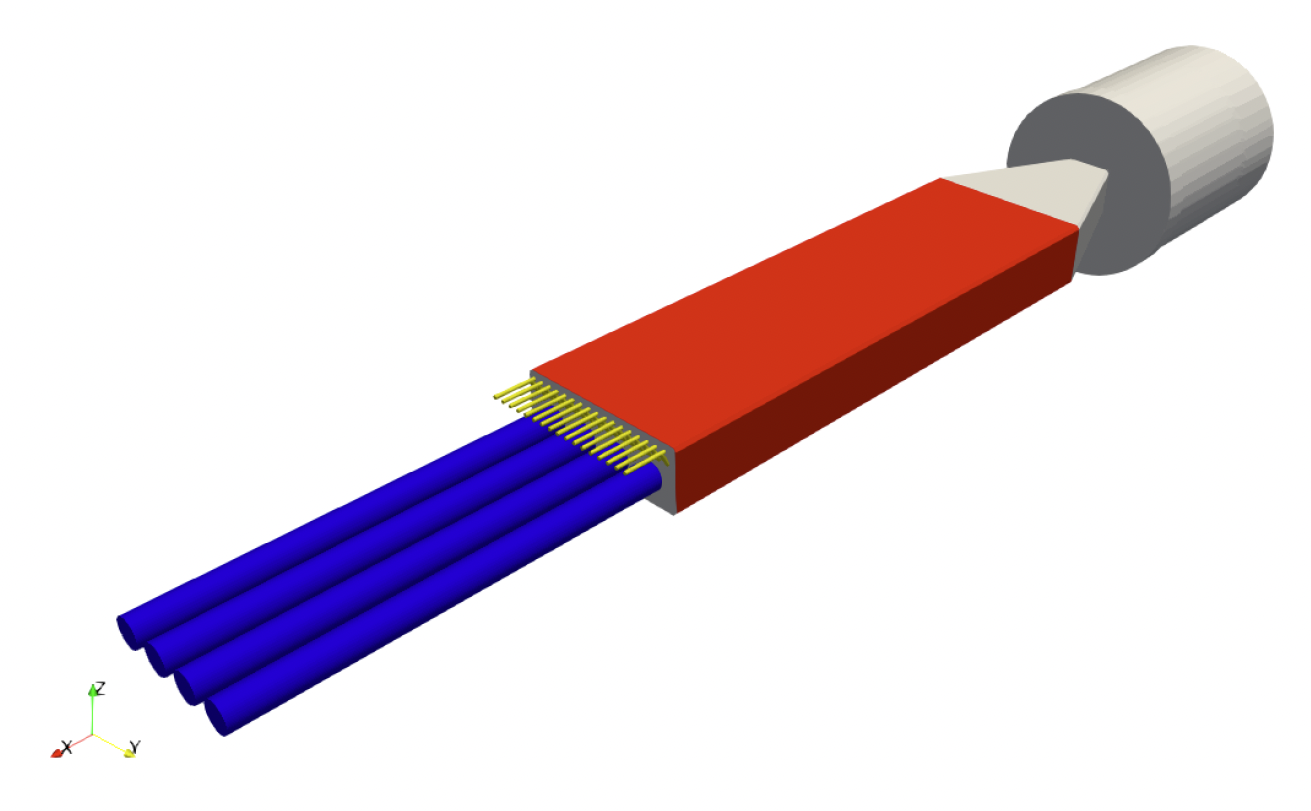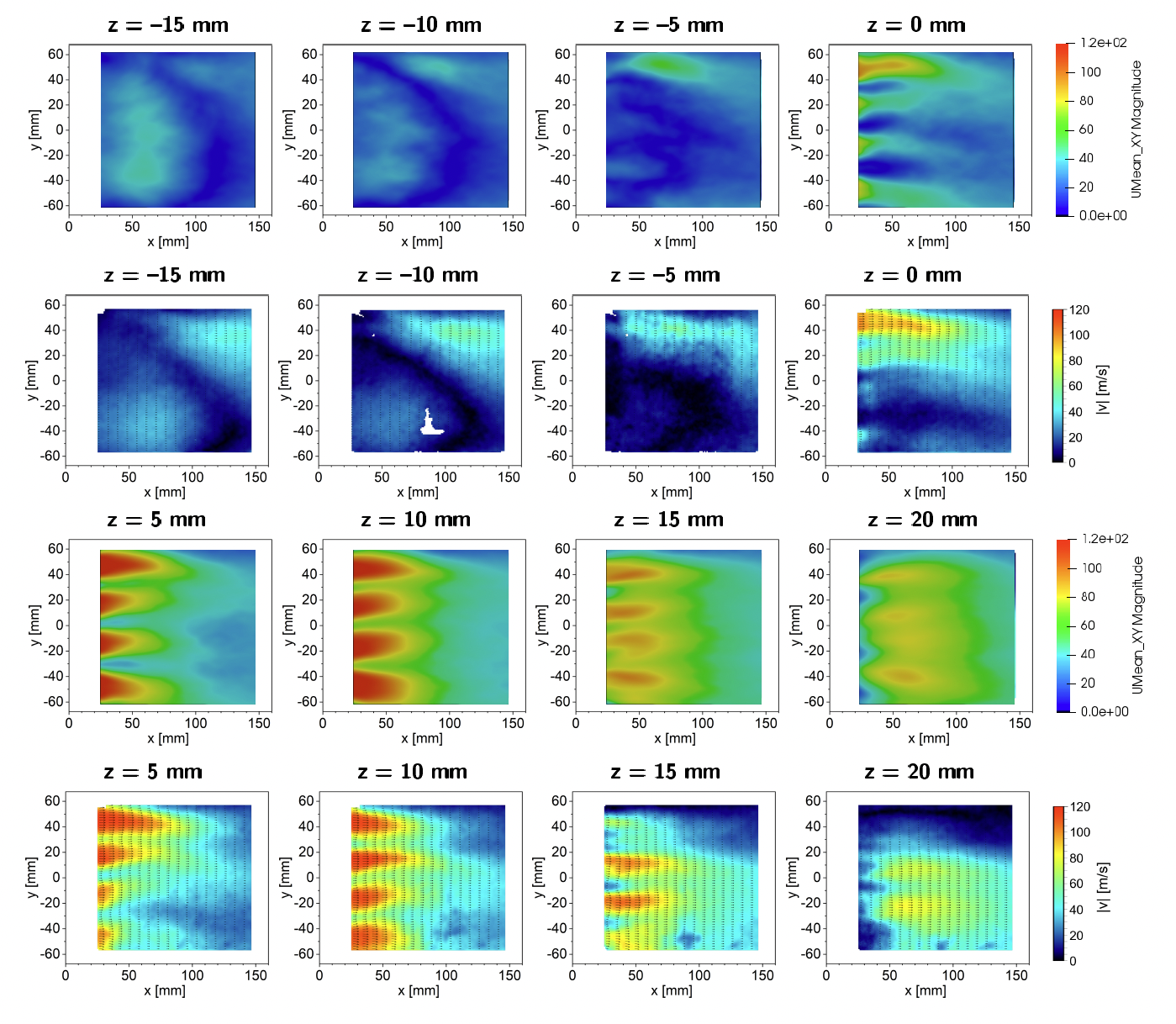Project
A-posteriori Investigation and Validation of Predictive CO Models for LES
Stationary gas turbines play an important role in the electric grid; due to their fast start-up times they are used for load-balancing. With increasing contributions from renewable sources, load-balance becomes more important and fast response times to strongly fluctuating power demands are essential. The low-load flexibility in gas turbines if often limited by carbon monoxide (CO) emissions. At very low loads, the downstream temperature in the combustor drops below the cross-over temperature, CO oxidation ceases, and the CO “freezes” well above its equilibrium value
In previous works, direct numerical simulations (DNS) have been performed and mod- eling approaches developed. In this project, we implement the model in an LES setting
and validate the model with experimental data.
Project Details
Project term
April 1, 2023–June 30, 2024
Affiliations
RWTH Aachen University
Institute
Institute for Combustion Technology (ITV)
Project Manager
Principal Investigator
Methods
The LES in this project are performed using OpenFOAM, an open-source object-oriented library for the solution of PDE, widely used as a platform for CFD. This has several advantages for the project; implementation of new models is convenient and col- laboration with partners both in research and industry is easily achievable. OpenFOAM implements the components of mesh handling, linear system and solver support, dis- cretization operators, and physical models in library form, where they are re-used over several top-level solvers. The implementation of in-house libraries, i.e. the CO model, is straightforward. Auxiliary tools for tasks, such as pre-processing, mesh manipulation, data acquisition, and dynamic mesh handling are built into the system, bringing it to the level expected by industrial CFD tools. The ITV has developed an in-house framework for OpenFOAM with tabulated chem- istry. Through the use of a Flamelet-Progress Variable (FPV) model with pre-computed and tabulated chemistry, a significant speedup is achieved while retaining accurate chem- istry solutions. Within this project we extend the FPV model to consider wall heat loss and implement the CO models into this framework. Due to the large computational domain and complex physics, the use of High Perfor- mance Computing (HPC) is essential for the success of this project.
Results
“In a first step, a non-reactive setup was performed to validate the turbulence modeling, inflow conditions, and solver settings. In the experiment, perforated plates are included in the jet inlets to homogenize the flow and reduce acoustic pressure waves. As this was not feasible in the simulation, we performed an auxiliary pipe-flow simulation to estimate the Reynolds stresses and turbulence length scales at the inlet. The values extracted from the auxiliary simulation were combined with a divergence-free, turbulent inlet condition to provide accurate levels of turbulence at the inlet. An image of the domain is shown in Fig. 1. The domain has four long jet inlets, which leads to a strong influence of the velocity wall functions. Several parameter variations were performed to accurately capture the effect of the wall functions. Some results from the non-reactive simulation are compared to the non-reactive experiments in Fig. 2. The mean velocity fields show a reasonable qualitative agreement between simulation and experiment. After the validation of the velocity fields in a non-reactive setting, the next step is the inclusion of chemistry. The combustion model was originally developed for premixed simulations with constant fuel-air ratios. Thus, the tabulation parameters were the combustion progress variable C and the “enthalpy defect term ∆h. However, the case investigated here has lean premixed main jets, but stoichiometric pilot flames. Accord- ingly, the chemistry model had to be extended to consider different fuel-air mixtures. This was done by including the mixture fraction Z as a table parameter. Reactive sim- ulations have been set up and performed. The combustion model, with the chemistry table parameterized by progress variable C and mixture fraction Z performs well. How- ever, in the reactive simulations we found pressure waves induced by the combustion, which did not occur in the non-reactive cases. Similar pressure waves were observed in the experimental investigation of the burner. As the conditions are very lean, the operating points are not very stable. Current work focuses on adjusting the boundary conditions to reduce the pressure waves’ effects on the combustion.
Discussion
The non-reactive results are promising and form a solid basis for further investigations. While we could not achieve a stable operation of the reactive case within this project period, the initial results from the combustion model are reasonable. The next step will be to adjust the inlet conditions to reduce the pressure waves. In future work, we will extend the simulation framework by an enthalpy defect term ∆h to consider wall heat losses. The enthalpy term is already included in the combustion model and will be implemented in the solver.
Additional Project Information
DFG classification: 404 Fluid Mechanics, Technical Thermodynamics and Thermal Energy Engineering
Software: OpenFOAM
Cluster: CLAIX
 Figure 1: Domain of the model combustion chamber. Main inlet jets are shown in blue, pilot burners in yellow, isothermal walls in red, and the adiabatic downstream region and outlet in gray.
Figure 1: Domain of the model combustion chamber. Main inlet jets are shown in blue, pilot burners in yellow, isothermal walls in red, and the adiabatic downstream region and outlet in gray.  Figure 2: Mean in-plane velocity fields from the non-reactive case at various heights. Comparison between simulation (first and third row) and experiment (second and fourth row).
Figure 2: Mean in-plane velocity fields from the non-reactive case at various heights. Comparison between simulation (first and third row) and experiment (second and fourth row).
 Figure 3: Mean velocity field at the jet center plane from the non-reactive case.
Figure 3: Mean velocity field at the jet center plane from the non-reactive case.